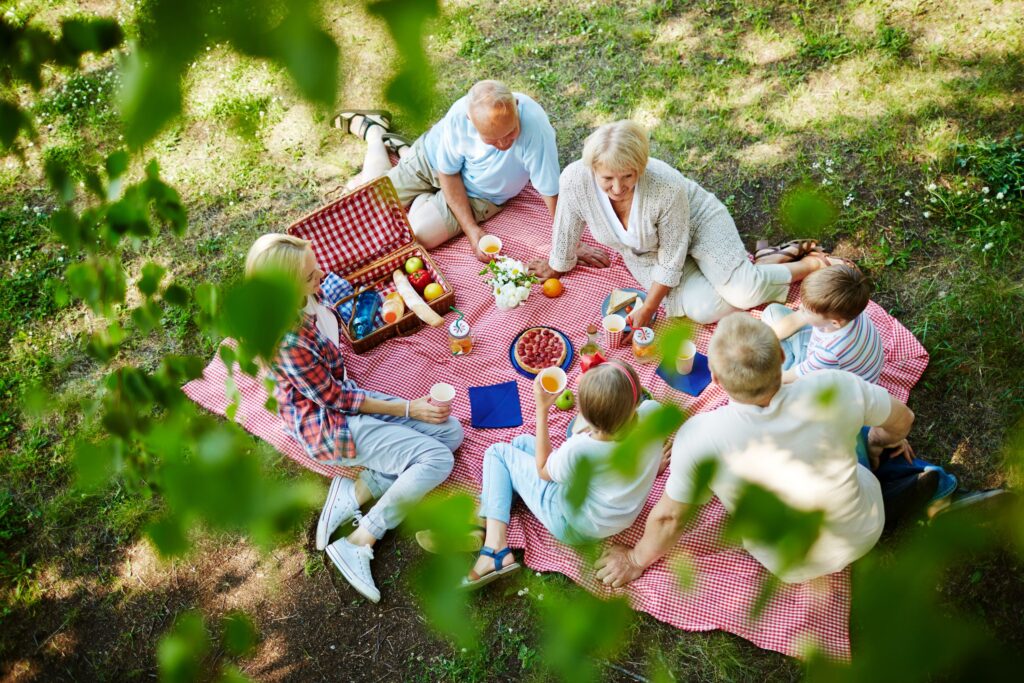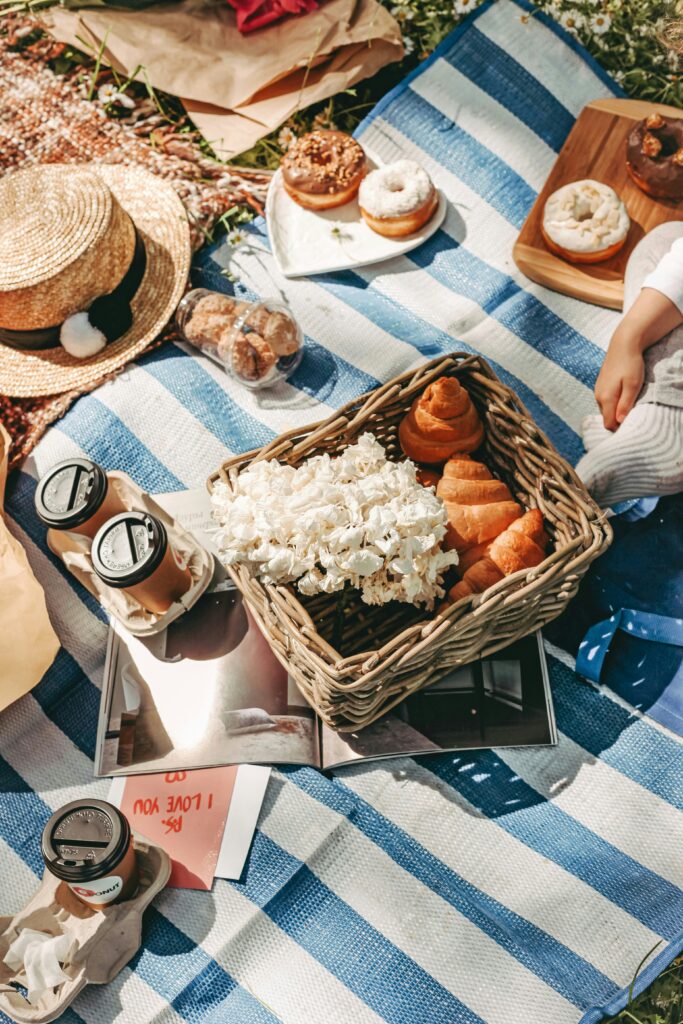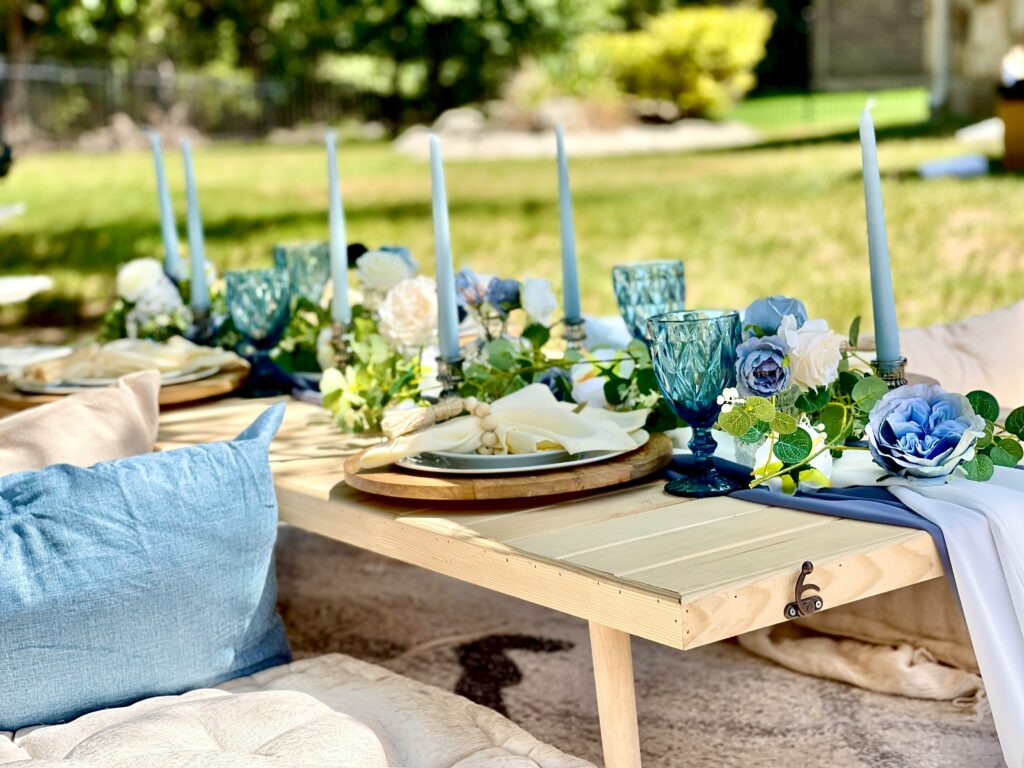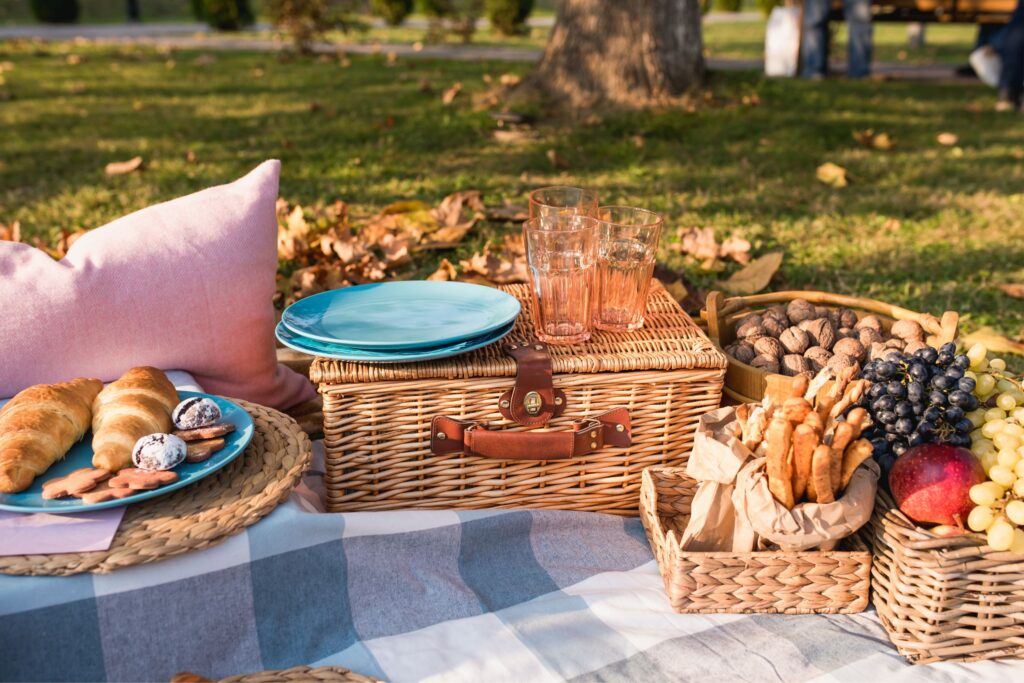A picnic isn’t just a casual meal outdoors. It’s a timeless ritual—a blend of food, nature, and the joy of slowing down. The word “picnic” may sound modern and cheerful, but its roots run deep through centuries of shared traditions and evolving customs.
Today, a picnic might include curated charcuterie boards or foldable wine tables, but the essence remains the same: connection. With good company, fresh air, and a bit of intention, a picnic transforms an ordinary afternoon into something memorable. Whether it’s at the park, beside a lake, or even indoors during a rainy day, the feeling is timeless.
The Origins of the Word “Picnic”
The word “picnic” originates from the French term pique-nique, first recorded in the 17th century. It referred to meals where guests contributed food—a kind of early potluck. Over time, the idea shifted from indoor meals to leisurely outdoor gatherings, especially in the 18th and 19th centuries, when countryside meals became popular among European aristocrats.
By the time picnics gained popularity in England, they had begun to resemble modern outings: baskets of food, scenic locations, and relaxed enjoyment. As access to public parks expanded and travel became easier, picnics became an everyday leisure activity across different social classes.
Picnics in Literature and Culture
From Jane Austen’s countryside outings to Monet’s garden scenes, picnics have long appeared in art and literature as moments of joy or quiet reflection. A picnic removes walls, both physical and social. No formal seating, no strict schedule. It invites freedom and ease, creating the perfect backdrop for connection.
Even today, as lives become busier, the idea of taking a pause outdoors still appeals. Picnics remain flexible and deeply personal—romantic one day, adventurous the next, solitary the day after.
Why the Picnic Still Matters Today
In a world ruled by screens and tight schedules, picnics offer something tangible. They bring people back to the present. Planning a picnic makes you notice small details—how the light shifts, how food tastes outdoors.
They can be simple or elaborate. Whether it’s bread and cheese on a towel or a themed garden party, it’s the break from routine that matters. A picnic lets you breathe, share, and slow down.
Picnics Throughout History: Not Just for Fun
Though picnics are now linked with leisure, they’ve also had influential social and political roles. During the French Revolution, public feasts became acts of unity. In the United States, civil rights groups utilized picnics to reclaim public space and foster solidarity.
These events weren’t only about food—they represented freedom. Sharing a meal outdoors, without restriction, still carries quiet power. Hosting a picnic today remains a celebration of togetherness in open space.
From Aristocrats to Backyard Blankets
As travel became easier in the 19th and 20th centuries, picnics gained global popularity. Victorian England saw elaborate picnics with servants and multi-course meals. Elsewhere, in the U.S., Canada, and Australia, simpler versions became part of everyday life.
Post-war picnics reflected a longing for peace and a sense of community. Parks became social hubs, and Sunday picnics evolved into cultural traditions. Today’s picnics still echo that spirit—personal, adaptable, and meaningful.

How Picnics Reflect Social Rituals
Though relaxed, picnics follow a quiet rhythm. People talk more. They linger. The way a blanket is placed or people sit in a circle encourages inclusion and conversation.
This lack of structure is its strength. There’s no pressure, no performance. It’s one of the few settings where authenticity flows easily. That’s why picnics continue to thrive—they’re timeless in their openness.
The Picnic Blanket: A Symbol in Itself
Lay out a blanket, and suddenly the ground becomes your space. It’s simple, yet symbolic. That patch of fabric marks a pause in the day.
Over time, the same blanket might see celebrations, naps, reunions, or quiet moments. Whether it’s a vintage quilt or a waterproof mat, each brings its character, but all serve the same purpose: grounding the experience.
Foods That Have Defined Picnic Culture
What you pack for a picnic reflects your culture, climate, and moment. In France, it’s often baguettes, cheeses, and wine. In Japan, bento boxes. In the U.S., sandwiches and fried chicken. In India, parathas and tiffins.
Despite these differences, picnic foods share traits. They travel well, are easy to share, and spark interaction. You pass a snack, you share a bite—it becomes part of the experience.
As styles evolve, people experiment with everything from mason jar salads to thermoses of soup. What matters isn’t how fancy the food is, but how well it fits the moment.

Evolution of the Picnic Basket
The traditional wicker basket brings charm, but it also tells a story. Early baskets held fine china, linens, and cutlery—indoor comforts brought outdoors.
Modern baskets and coolers now come in all forms: sleek backpacks, insulated carriers, and eco-friendly containers. The goal remains the same: carry what you need to enjoy your time. Choose what suits your outing—whether it’s stylish, compact, or practical.
Weather, Seasons, and the Mood of a Picnic
The season shapes the entire feel of a picnic. Spring brings blossoms and buzzing bees. Summer means sun-soaked afternoons. Fall is all about golden leaves and apple cider. Even winter picnics—yes, they exist—offer quiet magic with blankets and warm drinks.
Weather adds personality. Sunlight invites lounging. Wind brings spontaneity. Rain might cut it short—or create a memory under an umbrella. The key is working with the season, not against it.
Picnics Around the World: A Global Tradition
Picnics happen everywhere—adapted to local foods and customs. In Korea, the cherry blossom season aligns with the country’s celebrations. In Argentina, people sip mate and share pastries. In Sweden, cinnamon buns are the highlight. In the Middle East, flatbreads and grilled meats are served on mats beneath shady trees.
Every region adds its flavor, but the heart remains the same: take food outside and enjoy time together. That flexibility is what makes the picnic a global ritual.
How the Modern Picnic Evolved
Today’s picnics come in every form. You’ll find luxury picnic companies designing stylish events. At the same time, someone else enjoys tea and cookies on a park bench.
Technology is part of it now—speakers, lanterns, and cooler bags. But many also seek simplicity. Whether it’s digital-free or Instagram-ready, a picnic gives you space to pause and reconnect.

The Emotional Value of Picnics
Picnics often become emotional bookmarks in our lives. The taste of berries on a beach day. A conversation on a hilltop. A quiet solo lunch in a new city.
It’s not just about food. Being outside, relaxed, and present helps people feel more grounded. These simple acts become personal rituals that shape our mood and memory.
Why Picnics Keep Growing in Popularity
In fast-paced cities, picnics provide a welcome respite. No screens, no noise—just time. They’ve become part of wellness routines, team bonding, and personal resets.
Social media might inspire aesthetics, but the appeal goes deeper. It’s the freedom, the slowness, and the ability to make the moment your own.
Tips for Creating a Memorable Picnic Experience
Memorable picnics aren’t about perfection—they’re about thoughtfulness. Think about timing, guests, weather, and mood.
Pick a good spot with shade and clean ground. Choose food that holds up well—fruit, wraps, cookies, veggie sticks. Pack a cooler or insulated bag. Bring a trash bag. One extra detail—a small flower arrangement or handwritten menu—can make it feel special.
The Role of Picnics in Modern Events and Celebrations
Today, picnics play a role in celebrations of all kinds. From birthdays and proposals to bridal brunches and anniversaries, outdoor dining offers a flexible and beautiful setting.
Whether minimal or elaborate, it’s the care that makes it memorable. Rugs, flowers, or just a special drink—each adds to the atmosphere and reflects the occasion.
Sustainability and Eco-Friendly Picnic Practices
Outdoor gatherings come with responsibility. Reusable over disposables, local produce over packaged goods, and cleaning up afterward—all contribute to sustainable picnicking.
Choose bamboo cutlery, cloth napkins, and reusable containers. Refill water bottles. Sort waste properly. Leaving nature cleaner than you found it keeps the picnic tradition alive.
Picnics and Mental Wellness
Nature has a calming effect, and eating outdoors enhances it. Picnics support well-being by lowering stress and promoting connection.
Even short, solitary picnics help reset your mindset. When you pause in a green space, savor a snack, and take in your surroundings, you’re investing in your mental clarity.
FAQs
What is the historical origin of the word “picnic”?
The term comes from the French word pique-nique, referring to meals where guests contributed food. It later evolved into outdoor dining in the 18th century.
How did picnics become popular worldwide?
As public parks opened and travel became easier, picnics spread across cultures, each adapting the tradition to their local customs.
What makes a picnic different from other outdoor meals?
Picnics are casual, open-air meals that emphasize relaxation, often without a formal setup or strict timeline.
Are there cultural variations in picnics?
Yes. Different countries have unique picnic foods, customs, and traditions that are shaped by their climate, cuisine, and social habits.
How have modern picnics evolved from their historical counterparts?
They’ve shifted from elaborate affairs to flexible, creative experiences, ranging from minimalist setups to themed outdoor events.
Why are picnics considered good for mental health?
They support mindfulness, reduce stress, and foster connection in natural surroundings.
What are some signs that a picnic is well-planned?
A comfortable setup, weather-appropriate choices, good food, and attention to cleanup are key indicators of thoughtful planning.

